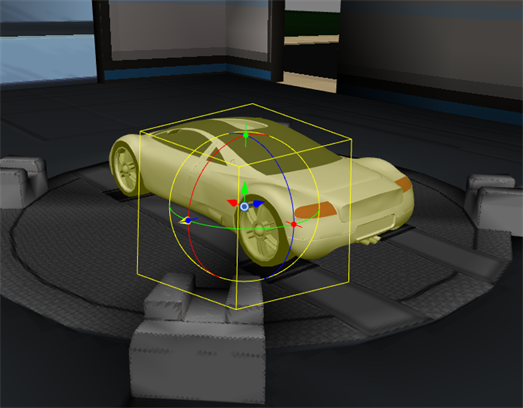About Reference Model
When working in Harmony, the first thing to do is import a reference model. This model is what will be represented in the Camera view OpenGL mode. Animators can reposition this model, animate the camera, and interact with it. Although several formats are supported, FBX (*.fbx) is the recommended format as this will allow you to embed textures for nicer looking reference models.
Other supported formats are Alembic (*.abc), (*.osb), Autodesk 3ds Max (*.3ds), Object (*.obj), and Collada (*.dae). The support of the Collada format enables artists using SketchUp to export to Harmony without the need to use SketchUp Pro.
Harmony offers options to convert the 3D files directly to FBX (*.fbx) files and save them so that the next time you reload the scene it doesn’t have reconvert them.
When importing an FBX (*.fbx) model, remember that model will never be used for the final render. Harmony itself does not have a 3D rendering engine embedded.
Rendering of the OpenGL representation of the model is supported. However, this is not a high enough quality for a final product. Instead, rendering is supported through outside rendering engines. The majority of users use Maya Softrender, although 3Delight and Pixie are also supported.

You can optimize the model quite a bit. The imported FBX model does not require high-resolution textures or sophisticated shaders. It can even have a lower poly count than your final model. It does, however, need to be the same size as your final model, as Harmony will be sending the position, rotation, and scale information of the model in the Harmony scene to Maya later to render. Keeping the imported FBX file as light as possible will give you snappy performance while animating.
